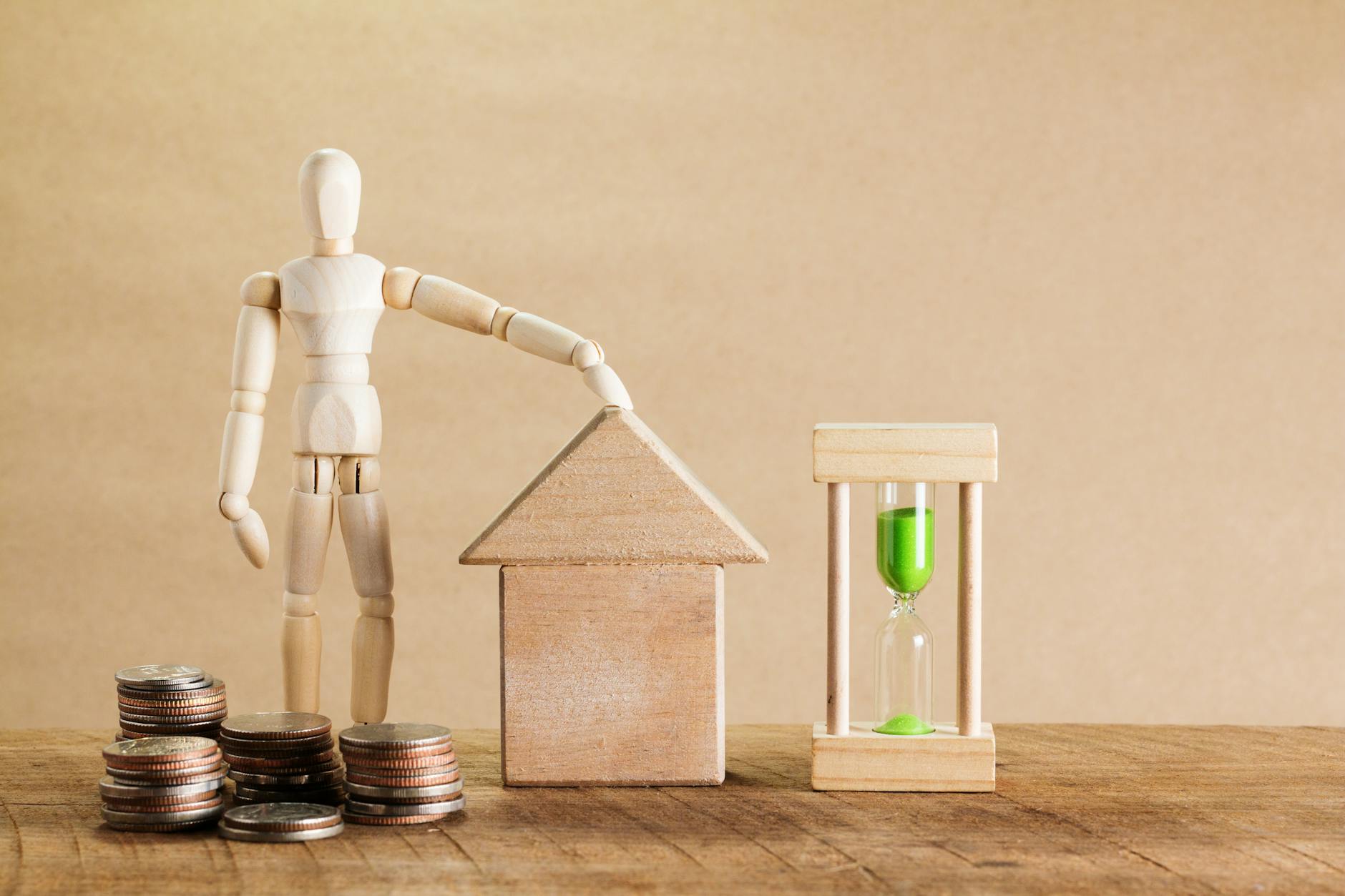How Daylight Saving Time Affects The Economy
Understanding Daylight Saving Time
Introduction to DST
Daylight Saving Time (DST) is when we shift our clocks forward in spring and fling ’em back in fall. Why? To squeeze more sunshine into our lives as the days stretch out in summer. The big idea is to chop down on electricity use and give businesses a little pep in their step.
For folks clocking in an 8-hour workday, DST’s effects pop up in surprising ways, like how we spend those hard-earned bucks or what shows up on the power bill. Stick around as we poke around this curious clock-tweaking tradition and see how it messes—or maybe—improves our daily doings. Check out this piece on business effects of daylight saving time.
History and Implementation
The U.S. first rolled out Daylight Saving Time during World War I to save energy via the Standard Time Act of 1918. Again in WWII, Uncle Sam thought it’d swing by for another round to stretch daylight and conserve juice. Post-war, the powers-that-be nailed it down with a new rulebook, the Uniform Time Act of 1966, setting a nationwide DST playbook (Indiana Farm Bureau Insurance, Wikipedia).
| Year | Event | Purpose |
|---|---|---|
| 1918 | Standard Time Act | Save energy during WWI |
| 1942 | Brought Back for WWII | Energy-saving rerun |
| 1966 | Uniform Time Act | Synchronize DST in the U.S. |
Fast forward, and about 70 countries get in on the DST action, covering most of North America and Europe. It’s still up in the air whether DST is the way to go, with some folks rooting for a no-clock-change-forever policy. Countries like Argentina, Iceland, and Turkey have at times just decided to stick with summer time, tossing out clock changes altogether (Wikipedia).
Knowing the backstory and supposed perks of DST gives us a lens to view this age-old tweak. It influences everything from powering gadgets at peak to tweaking our sleep schedule. Feel like getting into the nitty-gritty? Check our articles on circadian rhythm disruption from DST and see what DST does to our productivity.
Economic Impact of Daylight Saving Time
Positive Effects on Businesses
Daylight Saving Time (DST), that nifty clock adjustment, gives us sunnier evenings. What does that mean for businesses? Well, retail places see more foot traffic as folks aren’t rushing home under cover of darkness (Youth Policy Lab). Convenience stores? They’re practically singing, seeing a little bump in spending when days feel endless (Convenience).
Think about this: you’re more likely to buy a grill on a sunny afternoon. And, if you’re into sports or gardening, DST means more time for those hobbies, and sales for outdoor goodies go up after work. Tourism perks up too, with more chances for late-night adventures. Check out the business effects of daylight saving time for more insights.
| Business Type | DST’s Impact |
|---|---|
| Retail Shops | More shoppers, more sales |
| Convenience Shops | Money’s flowing |
| Tourism | Extra win each year |
| Outdoor Fun | Extra bucks |
| Home Fixing & Gardening | Fans of after-hours work |
Increased Consumer Spending
One of the neat perks of DST is letting wallets open wider. With extra daylight, folks are tempted to hit stores, grab a bite, or catch a flick. It’s like a sneaky way to boost cash flow into the economy, giving retail strategies a leg up (Youth Policy Lab).
| Activity | Spending Hike |
|---|---|
| Shopping | More folks wandering in |
| Dining Out | Extra diners at night |
| Entertainment | Late shows get packed |
For more details on how DST influences consumer choices, peek at technology adaptation to daylight saving time.
Reduction in Car Crashes
You know what else DST does? Cuts down on car crashes. More light in the evenings means you and your neighbors have an easier time on the roads. Fewer accidents means lives saved and a nice cut in costs from scrapes and bumps—less cash thrown at fixes and fewer days missed at work.
| Impact | Decrease |
|---|---|
| Car Crashes | Fewer bumps when the road’s brighter |
| Medical Bills | Smaller tabs thanks to less crashing |
| Car Fixes | Less frequent trips to the mechanic |
| Work Hours Lost | More time behind the desk, not the bed |
Grasping these various DST benefits helps us make the case for keeping this sunny tradition alive. Whether it’s ringing up retail sales, fattening spending, or that safer lane for travelers, DST’s economic ripple is mighty. For more on how DST transforms work habits and health, swing by our article on productivity changes with daylight saving time.
Energy Consumption and Costs
Electricity Usage Trends
So, time shifts twice a year when Daylight Saving Time (DST) kicks in, supposedly to save energy by maximizing daylight hours. But, let’s face it, the real impact can flip-flop depending on where you live. The idea started with good intentions, but like many things, life threw a wrench in it.
There’s a growing amount of evidence that suggests DST may actually bump up our energy use. Like in Indiana, out-of-date electricity patterns have shown a 1% increase in energy use, smacking an extra $9 million onto electric bills each year. And don’t get us started on the extra pollution—between $1.7 to $5.5 million in societal costs due to those pesky emissions (Fox Business).
Back in the disco era of 1975, the Department of Transportation crowed that DST saved the U.S. about 49,200 megawatts per day. Fast-forward a few decades, and more recent studies sing a different tune, indicating some states see a 1% uptick in juice usage during DST (Stanford University).
| Where/Study | Energy Use Change | Cost to Wallet | Social Costs (Pollution) |
|---|---|---|---|
| Indiana (NBER 2008 Study) | +1% | +$9M yearly | $1.7 to $5.5M |
| Dept. of Transport (1975) | -1% | N/A | N/A |
Residential Energy Consumption
Moving the clock likes to mess with how we cozy up at home too. Contrary to what you’d think, springing the clock forward might hike up heating and cooling needs. Picture this: cranking up the air conditioning to feel comfy when that sunset takes its sweet time.
Yep, Indiana again. The electricity bill bulged by about $9 million yearly. You can thank the heating and cooling systems for that. Plus, folks stay out later, burning through about 8,000 extra barrels of gasoline a day across America.
This means that though we might use less lighting, we’re boosting other energy consumptions. Benjamin Franklin wanted us to put sunlight to good use instead of burning candles, but the lifestyle twists that come with more daylight can lead to a beefy energy use.
Curious about what’s happening on the job front because of DST? Dive
into our articles on DST and business vibes and productivity dances with DST. For a techy angle, see how gadgets suit up for DST in our tech transition section.
Health and Productivity Effects
Workplace Injuries
Daylight saving time, that sneaky time thief, really puts a dent in our daily grind. It throws off our sleep, and surprise, surprise—more folks end up getting hurt at work right after the big switch. A study found that coal mining accidents jump by almost 6% on that dreaded Monday after clocks spring forward. Why? Because we’re all walking around like zombies, thanks to the time tweak.
Here’s the lowdown on how DST messes with different jobs:
| Workplace | Increase in Injuries (%) |
|---|---|
| Coal Mining | 6 |
| Manufacturing | 3 |
| Construction | 2 |
With these risks lurking, it’s time for companies to step up their game. Offering flexible schedules and running awareness sessions right when the time change hits can help keep injuries at bay.
Effect on Employees’ Productivity
This clock-winding business doesn’t just trip us up health-wise; it tanks our productivity too. Losing that precious hour of sleep in spring makes us a bit sluggish, and it’s not just about struggling to stay awake—there’s a real dip in work output. And get this, businesses lose a whopping $411 billion a year ’cause we’re all sleep-deprived and daydreaming.
The ripple effects we’re talking about come in a few flavors:
- Groggy Grind: With sleep out the window, folks are less sharp and more distracted, dragging down productivity.
- Online Escapes: In a bid to stay sane, some of us might just wander off into the web’s labyrinth on company time.
- Slow Market Moves: The fog from DST seems to slow down financial pros too, usually when it comes to reacting to market updates (Medius).
For more juicy details on how DST affects productivity, feel free to check out our article on productivity changes with daylight saving time.
To tackle the productivity slump, firms should keep the DST effects in mind. Encouraging better sleep habits, allowing remote work, and granting flexible hours can make a difference. And for more tips on how to dodge the circadian rhythm chaos from DST, swing by our advice on beating circadian rhythm disruption from DST.
Proposed Changes and Legislation
As we wrap our heads around the economic hiccups caused by the whole daylight saving time (DST) shenanigan, there’re loads of ideas floating about to tackle the headaches and downsides that come with switchin’ the clocks.
Permanent DST
Keeping daylight saving time all year round is the brainchild of many places like Argentina, Iceland, and Turkey, who fancy stickin’ with summer hours forever. This no more clock switcheroo could be kickin’ for various reasons. They say that it’d mean fewer car and pedestrian accidents, less electricity use during peak times, and could even tackle crime (Wikipedia). Fun fact: it was tried a couple of times in the U.S.—once during WWII and again in the 70s’ energy crunch. Even though those trials were fleeting, they gave us a peek at the perks and quirks of doing DST all year.
Sticking with permanent DST might squash some of the health pitfalls from flipping clocks twice a year, stuff like the havoc it wreaks on our internal body clocks. That can mess with sleep and how we get things done. And don’t forget the potential to jazz up the economy with more shopping and keeping bad guys at bay. It’s a pretty appealing notion, ain’t it?
Sunshine Protection Act
The Sunshine Protection Act is a standout among the shots to make DST a year-round gig in the U.S. Some folks in the Senate came up with this plan to toss the twice-a-year clock muckery. They claim it would boost spending in stores and cut down on car crashes (Youth Policy Lab).
Even with all the noise about the headaches from shuffling time, Congress keeps hitting speed bumps to put an end to it. Sen. Marco Rubio’s Sunshine Protection Act’s had its fair share of hurdles, with the newest proposals collectin’ dust in committees.
Fan club members of the Sunshine Protection Act rave about how businesses, workers, and public safety might thrive without the hassle of clock changes. It could jazz up productivity, cut down on injuries at work, and make sure tech stuff runs smoothly in sync with time (technology adaptation to daylight saving time).
With all the daylight saving time chatter, it’s vital to chew over both economic upsides and health perks of having Permanent DST and the Sunshine Protection Act. These tweaks might just set us up for more reliable timekeeping, giving our economy and day-to-day life a real kick up a gear.
Technology and Energy Efficiency
Let’s take a stroll through the twisty world of Daylight Saving Time (DST) and how it tangles with technology and energy efficiency. By peeking under the hood of modern energy use, we can see how these patterns have morphed over time.
Lighting Gets Smart (Finally)
Back in the day, incandescent bulbs were energy hogs, devouring power like it was going out of fashion. But with snazzy new LEDs and energy-sipping fluorescents lighting up our lives, those days are history. As Stanford University points out, with these tech leaps, the expected energy boons from DST ain’t what they used to be.
LEDs are the whiz kids of the lighting gang—efficient and stubbornly long-lasting. Check out how they stack up against the old-timers:
| Bulb Type | Energy Guzzling (watts) | Shelf Life (hours) |
|---|---|---|
| Incandescent | 60 | 1,000 |
| Fluorescent | 13-15 | 7,000-15,000 |
| LED | 6-8 | 20,000-50,000 |
Since our bulbs are slurping up less juice, the good vibes from DST aren’t packing as much punch as they once did. Curious about how tech jives with daylight saving? Mosey on over to our page about technological twists with daylight saving time.
Climate Control Conundrums
While our lighting’s been sharpening up, climate control systems are still hogging energy like they own the place. Think heating, ventilation, and air conditioning (HVAC)—they’re still big-time energy munchers in the homes and offices where we hang our hats.
These systems are picky about the temps outside, and DST plays puppet master with daylight hours, which throws a monkey wrench into energy consumption. Imagine a hot afternoon making the air con work overtime or a chilly dawn cranking up the heater. That’s DST for you, switching things up on us.
| Energy Usual Suspects | Normal Usage (%) |
|---|---|
| Heating Systems | 30-40% |
| Air Conditioning | 20-30% |
| Lighting | 10-15% |
| Other Energy Gobblers | 15-30% |
The tango between climate control and lighting shifts leaves DST’s cost-effectiveness and energy use up in the air. Lighting might be cleaning up its act, but our cozy HVAC needs could cancel the fizz, tweaking how energy bills roll out.
Being in the know about these tech tweaks and their part in the energy play helps us grasp the real deal with DST’s money matters. Pondering future springs forward or falls back? We’ve got other goodies like tales of productivity twists with DST to ponder.













